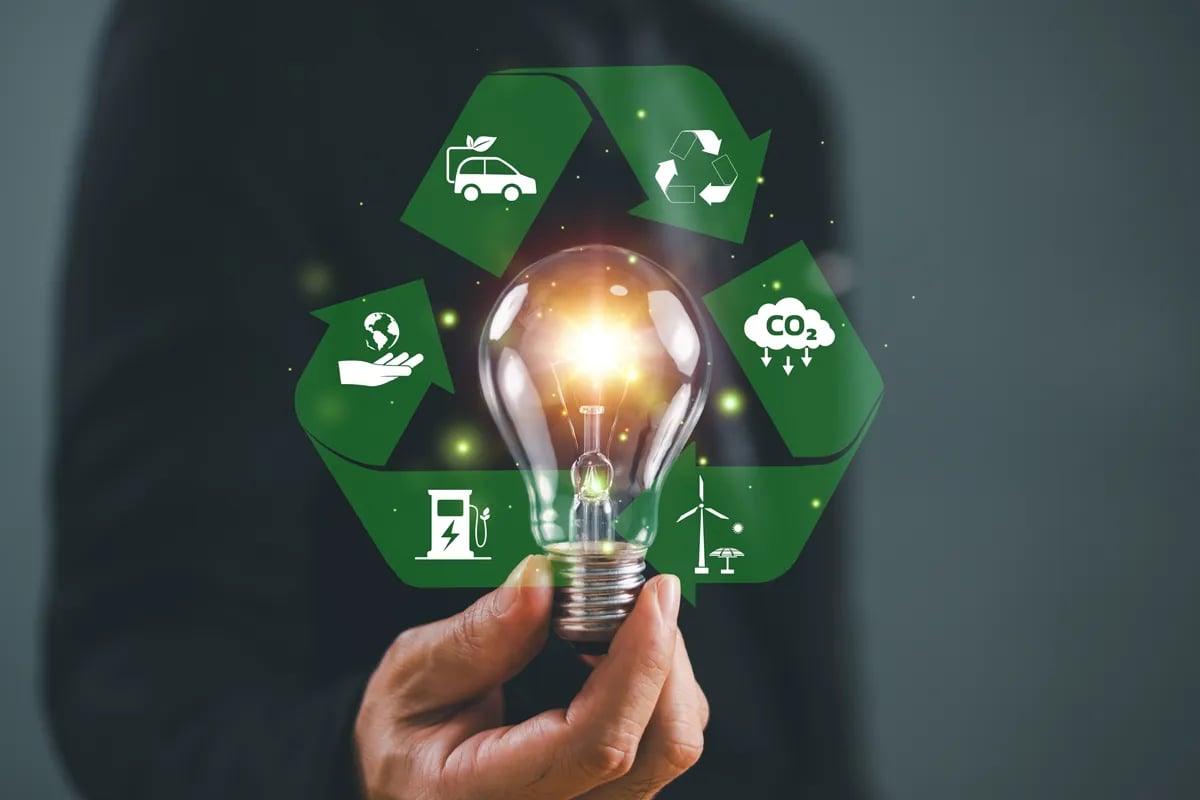The EU aims to unlock over EUR100 billion in funding to support decarbonization efforts across industries
A new study by the European Commission’s Joint Research Centre (JRC) reveals that adopting circular economy practices across heavy industry in the European Union (EU) could reduce carbon dioxide (CO₂) emissions by up to 231 million tonnes annually. This significant reduction, achievable through improved materials management such as reduction, reuse, and recovery, offers a crucial pathway for the EU to meet its greenhouse gas emission targets and bolster its climate-neutral industry ambitions. The steel and plastics sectors alone lead the potential emission savings, followed closely by aluminium and cement industries.
EU heavy industry’s CO₂ footprint
Heavy industry in the EU, comprising steel, aluminium, cement & concrete, and plastics, represents around 70 percent of the continent’s industrial CO₂ emissions. The JRC report highlights that circular economy strategies could yield emissions reductions of about 64 to 81 million tonnes in steel, 75 to 84 million tonnes in plastics, 12 to 14 million tonnes in aluminium, and 38 to 52 million tonnes in cement and concrete sectors each year. These measures capitalize on maximizing resource efficiency, minimizing waste, and optimizing material flows by extending the product lifecycle, recycling materials, and reducing raw material extraction.
The transition toward circularity not only lowers emissions but also reduces the EU heavy industries’ dependency on imported raw materials and fossil fuels. For instance, in the steel sector, circular measures could cut metal ore imports by approximately 46 million tonnes and reduce fossil fuel consumption by 730 petajoules annually. Likewise, in the plastics sector, annual fossil fuel use could drop by 910 petajoules, substantially decreasing the demand for energy-intensive virgin materials. These efficiencies improve the trade balance by cutting imports more than exports, translating to billions of euros saved and enhancing the union’s industrial autonomy.
Beyond environmental benefits, integrating circular economy pathways can also foster economic resilience. According to Agora Industry’s analysis, Europe’s heavy industry sectors are both energy and resource-intensive, consuming around 13 percent of total final energy consumption in the EU, with iron and steel, aluminium, cement, and lime accounting for roughly 581 million tonnes of CO₂ annually. By mobilizing circular economy strategies, the EU can simultaneously reduce industrial emissions, decrease dependence on fossil fuel imports, and improve the strategic autonomy of its industrial base — critical elements underscored amid the geopolitical tensions affecting energy security.
Advanced recycling drives circular economy initiatives
Concretely, circular economy measures include advanced recycling, increased use of scrap materials, extending the lifespan of products through design innovation, and substituting raw materials with recovered materials. For example, the steel industry’s shift from traditional blast furnaces to scrap-based electric arc furnace (EAF) processes—enabled by higher scrap availability due to circular practices—could reduce steel demand by nearly 30 percent compared to baseline projections by 2050, with scrap-based production potentially reaching 70 percent.
In cement and concrete sectors, circularity helps reduce emissions by promoting the recirculation of materials and substitution of clinker with low-carbon alternatives. Since cement production is highly energy-intensive and produces large quantities of CO₂ during the calcination process, the mining of raw materials and use of fossil fuels can be significantly decreased through circularity. Innovations such as CO₂ mineralization, which captures and stores CO₂ within construction materials, also contribute to emissions reductions while creating sustainable building products.
From a strategic viewpoint, the circular economy is perceived as a powerful force for climate mitigation and industrial innovation. Studies by Material Economics and the European Climate Foundation estimate that a more circular economy could contribute to cutting emissions by as much as 296 million tonnes of CO₂ annually in the EU by 2050. This represents more than half of the projected net-zero emissions target for heavy industry under ambitious climate scenarios. Demand-side circular measures thus offer a substantial complement to supply-side efforts such as electrification and carbon capture technologies. Furthermore, these measures often prove economically attractive, presenting cost-effective solutions that stimulate industrial competitiveness.


Financial benefits of circularity
The financial implications resonate strongly with industrial policy objectives. Reduced need for raw material imports improves trade balances significantly—for example, the plastics sector could save EUR20 billion in imports while increasing its trade surplus. Moreover, reduced fossil fuel consumption alleviates price volatility risks and reliance on external suppliers, factors critical to maintaining industrial stability in uncertain geopolitical climates.
The transition to circularity is already being supported by EU-level initiatives such as the European Green Deal and the forthcoming Clean Industrial Deal, which aim to unlock over EUR100 billion in funding for the decarbonization of energy-intensive industries. These frameworks emphasize the importance of circular economy principles alongside innovation in clean technologies to ensure Europe’s heavy industry remains future-ready, sustainable, and competitive globally.
Experts emphasize that while circular economy strategies require collaboration across the value chain—from materials producers and manufacturers to policymakers and consumers—the technologies and know-how largely exist today. Implementing frameworks that foster industrial symbiosis, enhanced recycling infrastructures, product design for longevity, and circular business models can accelerate the transition in the near term. Consequently, unlocking industrial decarbonization through circularity not only contributes to climate goals but also underpins energy security and economic growth within the EU,
